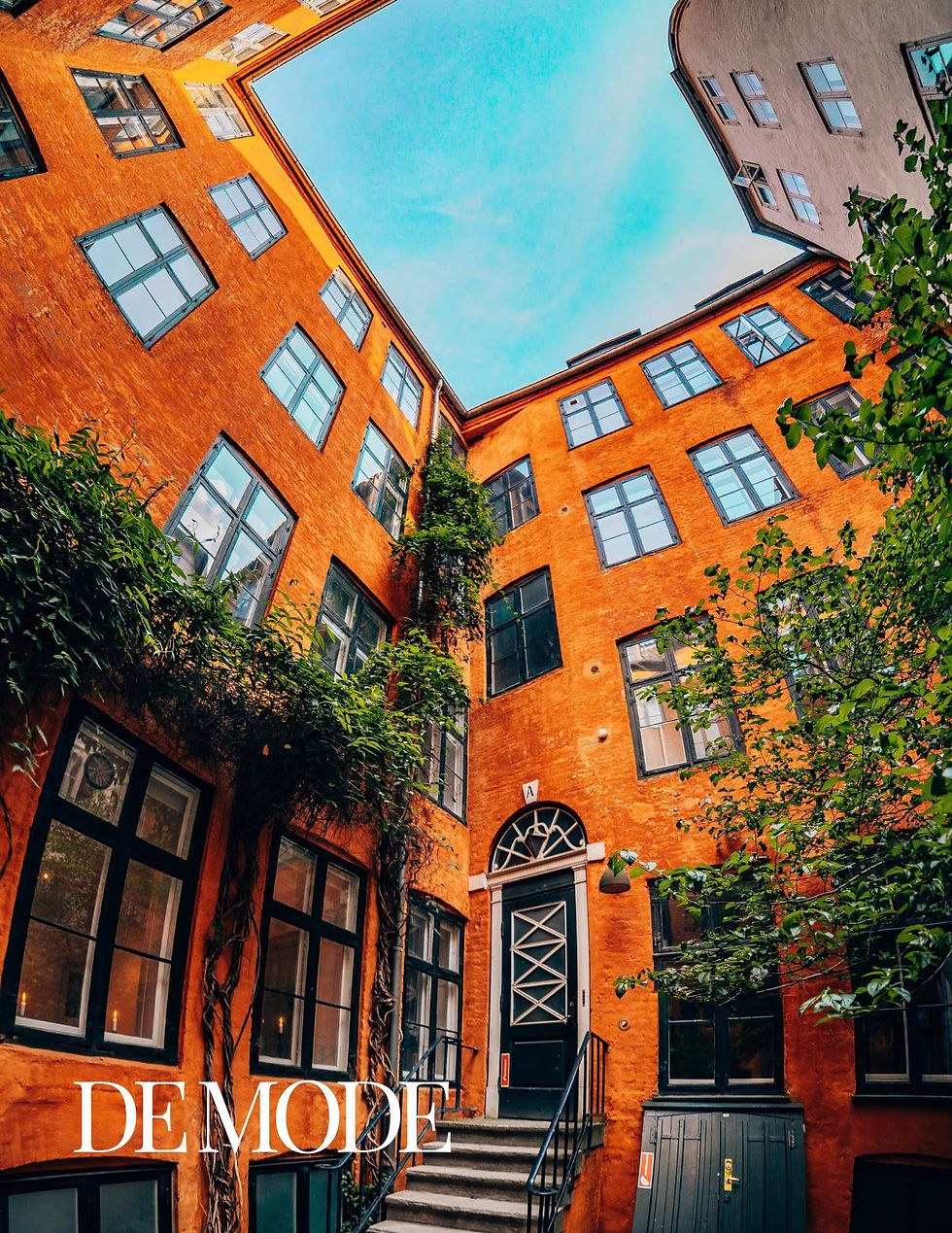"SERENE COLORS - CALMING COLOR PALETTES FOR A PEACEFUL HOME": DE MODE GLOBAL
- DE MODE

- Feb 15, 2024
- 4 min read
ORIGINALLY PUBLISHED IN DE MODE | HOME DECOR
Article Published on: 15TH FEB 2024 | www.demodemagazine.com
Creating a peaceful home begins with selecting serene colors that evoke feelings of tranquility, harmony, and relaxation. From soft neutrals to soothing blues and gentle greens, calming color palettes have the power to transform any space into a serene sanctuary where stress fades away and comfort abounds.

The psychology of color plays a significant role in shaping our emotional responses and perceptions of space. Serene colors, with their understated elegance and gentle allure, have a calming effect on the mind and body, creating environments that promote rest and rejuvenation. Let's explore some of the most soothing hues and how they can be incorporated into interior design to foster a sense of serenity and well-being.
Soft Neutrals: Neutrals such as beige, ivory, and taupe serve as the foundation of serene color palettes, providing a timeless backdrop that exudes warmth and sophistication. These understated hues create a sense of balance and tranquility, making them ideal for walls, ceilings, and larger furnishings. Pairing soft neutrals with natural materials like wood and stone adds depth and texture to the space, creating a cozy and inviting atmosphere.
Cool Blues: Shades of blue, reminiscent of the sky and sea, evoke feelings of calmness and serenity. From pale sky blue to deep navy, blue hues have a soothing effect on the senses, making them perfect for bedrooms, bathrooms, and living areas where relaxation is paramount. Lighter shades of blue promote a sense of openness and airiness, while darker blues add depth and sophistication to the space. Incorporating blue accents through artwork, textiles, and accessories infuses the room with a sense of tranquility and timeless elegance.
Gentle Greens: Green, the color of nature, brings a sense of balance and renewal to interiors, making it a popular choice for creating serene living spaces. Soft sage green, muted olive, and pale mint green evoke the tranquility of lush landscapes and verdant gardens, fostering a connection to the outdoors. Green hues are particularly well-suited for bedrooms, home offices, and reading nooks, where they promote concentration, relaxation, and a sense of well-being. Incorporating natural elements such as potted plants, botanical prints, and organic textures enhances the calming effect of green and creates a harmonious environment that nourishes the soul.
Warm Whites: Crisp white walls and furnishings create a sense of purity and simplicity, serving as a blank canvas for personal expression and relaxation. White reflects light and creates an illusion of space, making it an excellent choice for smaller rooms or areas with limited natural light. Pairing white with soft, warm tones such as creamy ivory, blush pink, or sandy beige adds warmth and dimension to the space, creating a cozy and inviting atmosphere. To prevent white interiors from feeling cold or sterile, incorporate tactile materials like plush textiles, natural wood, and woven accents to add warmth and texture to the space.
Earthy Tones: Earthy tones such as sandy beige, warm terracotta, and muted ochre evoke a sense of grounding and connection to the natural world, making them ideal for creating serene and inviting living spaces. These warm, earthy hues complement a variety of design styles, from rustic farmhouse to modern minimalist, adding warmth, depth, and character to the space. Incorporating natural materials such as rattan, jute, and woven textiles enhances the organic feel of earthy tones and creates a cozy and inviting atmosphere that encourages relaxation and rejuvenation.

Incorporating serene colors into interior design involves more than just selecting paint swatches; it's about creating a harmonious balance of hues, textures, and elements that work together to evoke a sense of calm and tranquility. Consider the following tips for incorporating calming color palettes into your home:
Layering: Create visual interest and depth by layering different shades of serene colors throughout the space. Mix and match textures, patterns, and finishes to add dimension and create a cohesive look that feels inviting and harmonious.
Natural Light: Maximize natural light to enhance the calming effect of serene colors and create a bright and airy atmosphere. Keep window treatments light and sheer to allow sunlight to filter into the space, illuminating the room and highlighting its serene palette.
Balance: Strike a balance between light and dark, cool and warm tones to create a sense of equilibrium and harmony within the space. Use darker hues sparingly as accents to add depth and contrast without overwhelming the senses.
Accessorize Thoughtfully: Incorporate accessories such as throw pillows, area rugs, artwork, and decorative objects in complementary colors to tie the room together and add personality and visual interest. Choose accessories with organic shapes and textures to enhance the natural feel of the space and create a sense of serenity and balance.
Personalize: Infuse your personal style and preferences into the design by selecting serene colors that resonate with you on a deep emotional level. Whether you prefer soft neutrals, cool blues, or earthy tones, choose colors that make you feel calm, relaxed, and at peace in your home.

In conclusion, serene colors have the power to transform any space into a peaceful retreat where stress melts away and comfort prevails. By incorporating soft neutrals, cool blues, gentle greens, warm whites, and earthy tones into your interior design, you can create a harmonious environment that nourishes the mind, body, and soul. With careful consideration of color, texture, and light, you can design a home that feels like a sanctuary—a place of refuge and tranquility where you can unwind, recharge, and reconnect with the beauty of the world around you.



Comments